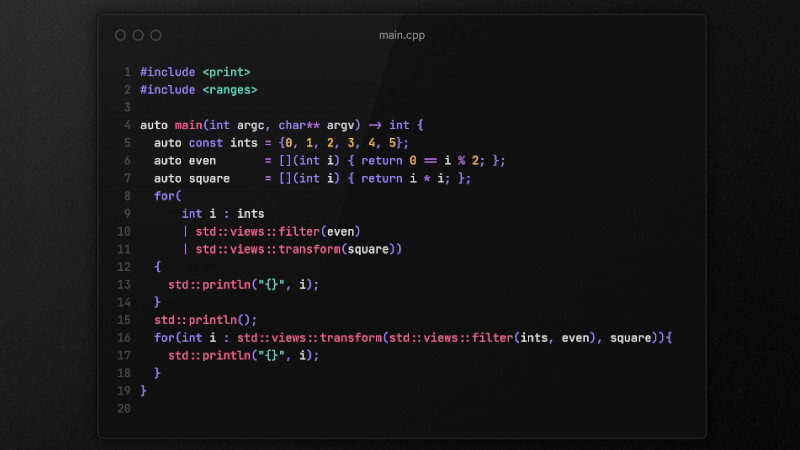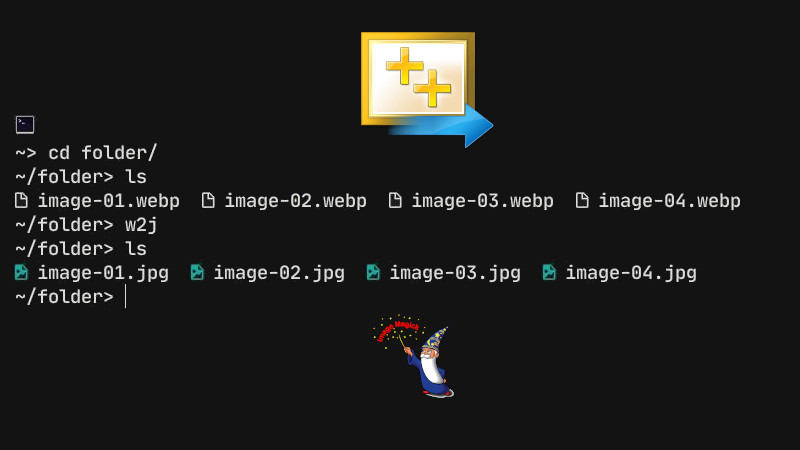
C++ is historically the language of choice for game engine development due to its performance, memory control, and ability to handle complex real-time systems.
Over the decades, several engines — from commercial AAA solutions to open-source projects — have been built with this language at their core.
In this article, we present the 100 game engines written in C++, highlighting their supported scripting languages, famous games that used them, and links for those who want to explore them further.
Whether you are a curious developer, an engine enthusiast, or someone looking for the ideal foundation for your next project, this list provides a complete overview of the C++ engine ecosystem in the games world.
01. Unreal Engine

Unreal Engine is a game development engine created by Epic Games, known for its high-level graphics and use in AAA games, simulations, and visualizations.
- Written in: C++
- Game development languages: C++ and Blueprints(visual scripting system)
Famous games made with Unreal Engine:
- Fortnite
- Gears of War (series)
- Unreal Tournament (series)
- Batman: Arkham City / Knight
- Final Fantasy VII Remake
- Street Fighter V
- Mortal Kombat 11
- The Matrix Awakens (demo tech)
Also used in cinema and architecture due to its high graphic realism.
02. Godot

Godot Engine is an open source and lightweight engine for 2D and 3D development, with a focus on usability and flexibility.
-
Written in: C++ (core) and GDScript (engine scripts)
-
Languages for game development: GDScript, C#, C++, VisualScript, and several other languages via GDNative.
Famous games made with Godot:
- The Case of the Golden Idol
- Dome Keeper
- Cassette Beasts
- Kingdoms of the Dump
- Lumencraft
Popular in the indie community for being free, lightweight and highly customizable.
03. Unity

Unity is a cross-platform engine widely used for 2D, 3D, VR and AR game development, with a strong presence in mobile and indie games.
-
Written in: C++ (engine) and C# (scripting API)
-
Game development languages: Mainly C# (support for others via plugins, but not official)
Famous games made with Unity:
- Hollow Knight
- Cuphead
- Monument Valley
- Ori and the Blind Forest
- Among Us
- Genshin Impact
- Inside
Known for its user-friendly interface, large community, and support for multiple platforms.
04. Cocos

Cocos2d and Cocos3d are open source engines focused on 2D and 3D game development, popular in mobile games, especially in Asia.
Cocos2d
- Written in: C++ (Cocos2d-x), Objective-C (Cocos2d-iPhone), JavaScript (Cocos2d-JS)
- Development languages: C++, Lua, JavaScript (varies according to version)
Cocos3d
- Written in: Objective-C (based on Cocos2d for iOS)
- Development languages: Objective-C
Famous games made with Cocos2d/Cocos2d-x:
- Clash of Kings
- Badland
- Geometry Dash
- Big Fish Casino
- Dragon City (initial mobile versions)
Mainly used for lightweight mobile games, with good performance on modest devices.
05. CryEngine

CryEngine is a high-performance engine developed by Crytek, focused on realistic graphics and vast environments, widely used in AAA games.
- Written in: C++
- Development languages: C++, Lua (for scripts), and C# (in newer versions)
Famous games made with CryEngine:
- Crysis (series)
- Ryse: Son of Rome
- Sniper: Ghost Warrior 2 and 3
- Kingdom Come: Deliverance
- The Climb
It stands out for its graphical fidelity and advanced lighting and physics system.
06. Defold

Defold Engine is a lightweight, cross-platform engine for 2D game development, maintained by the Defold Foundation (with support from King, creator of Candy Crush).
- Written in: C++, Lua, Java (for parts of the platform)
- Development languages: Lua (main), with limited support for native extensions in C/C++
Famous games made with Defold:
- Family Island
- Pet Rescue Puzzle Saga
- Gun Gods
- Interrogation
It stands out for being free, with a lightweight editor, multiplatform support and cloud builds.
07. GameMaker

GameMaker is a 2D game engine (with limited 3D support) focused on facilitating fast and accessible development, widely used by indie developers and beginners. It offers an intuitive visual environment, as well as its own scripting language, simplifying the creation of games even without in-depth programming knowledge.
- Written in: C++
- Languages for game development: GML (GameMaker Language) (own language similar to C), Visual Scripting
Famous games made with GameMaker:
- Undertale
- Hyper Light Drifter
- Katana ZERO
- Hotline Miami
- Risk of Rain
- Nuclear Throne
- Downwell
It is widely chosen for its balance between simplicity and power, allowing prototyping and rapid publishing across multiple platforms.
08. Torque

Torque Engine is a cross-platform game engine originally developed by GarageGames, popular in the 2000s for its affordability and focus on indie developers.
Famous games made with Torque Engine:
- Marble Blast Gold
- Tribes 2 (engine’s technological basis)
- Legions: Overdrive
- Blockland
The engine had several versions, such as Torque 2D, Torque 3D and Torque X, with part of the code later released as open source. Today it is mainly used for educational purposes and independent projects.
09. Ogre3D

Ogre3D (Object-Oriented Graphics Rendering Engine) is an open source 3D rendering engine focused on facilitating the development of real-time graphics, with an emphasis on flexibility and customization.
- Written in: C++
- Development languages: C++, but has bindings for other languages such as C#, Python, Java, and Lua.
Famous games made with Ogre3D:
- Torchlight (series)
- Shadows of the Colossus (used Ogre3D for a 3D version)
- Xonotic (first-person shooter)
- The Dark Mod (a mod for Doom 3)
Ogre3D is primarily a rendering engine and is therefore commonly used in conjunction with other tools to create complete games. Its flexibility is one of the main advantages for developers looking to customize the engine for their specific needs.
10. Panda3D

Panda3D is an open source 3D game development engine, known for being easy to use and highly integrable, especially with Python.
- Written in: C++
- Development languages: Python (main) and C++
Famous games made with Panda3D:
- Pirates of the Caribbean Online (Disney MMO)
- Toontown Online (Disney MMO game)
- Carl’s Journey (indie game)
Panda3D is popular in game and simulation development, especially in educational environments and for rapid prototyping. Its tight integration with Python makes it a popular choice for developers looking for simplicity and flexibility.
11. Overload

Overload is a free and open-source 3D game engine written in C++20 and with support for Lua scripts. It was created in 2019 by Benjamin Viranin, Max Brun and Adrien Givry as a graduation project and has evolved into a community initiative with dozens of contributors.
Languages:
- Engine: C++20
- Game scripts: Lua
Key features:
- Full game editor
- Physically-based rendering (PBR)
- Custom shader support
- Windows game builder
- Profiling tools
- Material editor
- Spatial audio
- Rigid body physics
Famous games: As of now, Overload does not have any widely recognized famous games. However, there is a tech demo called “Cargo” that was developed to showcase the engine’s capabilities.
12. Rebel Fork

The Rebel Fork Engine (rbfx) is a lightweight, modular game engine derived from Urho3D, written in C++17. It offers experimental C# support for game development.
Languages:
- Engine: C++17
- Game development: C++ and experimental C# support
Famous games: So far, there are no records of widely recognized games developed with rbfx.
13. Unigine

The UNIGINE Engine is a proprietary, cross-platform 3D engine developed by UNIGINE Company, aimed at simulations, virtual reality, games, and industrial visualizations. It is widely used in professional applications that require realistic graphics and large-scale performance.
Programming Languages
- Engine: C++
- Game Development: C++, C# (.NET 8+), and UnigineScript (own language)
Famous Games
UNIGINE is best known for its graphics benchmarks, such as Heaven, Valley, and Superposition, widely used by hardware enthusiasts and specialized vehicles. There are no records of widely recognized commercial games developed with UNIGINE.
14. Flax

The Flax Engine is a modern, agile, and cross-platform 3D game engine with open source code. It was designed to offer high performance and productivity, supporting everything from indie projects to large-scale productions.
Programming Languages:
- Written in: Mainly in C++ (engine core) and C# (editor).
- For game development: C++, C#, and Visual Scripting.
Games Developed with Flax: To date, there are no widely known titles developed with the Flax Engine. However, the engine is used by independent developers and small studios, with ongoing projects that explore its capabilities.
15. Ultra Engine

Ultra Engine is a 3D and VR game development engine, successor to Leadwerks, focused on high performance and efficient use of the GPU. It uses Vulkan-based rendering, supports PBR materials and is optimized for virtual reality applications.
Engine programming language: C++.
Supported languages for game development:
- Lua (Standard edition)
- C++ and Lua (Pro edition)
Famous games developed with it: So far, there are no records of widely known games developed with the Ultra Engine, as it is still in early access since December 2023.
16. Solar2D

Solar2D is an open source 2D engine, formerly known as Corona SDK, aimed at cross-platform development of games and mobile applications. It is maintained by Vlad Shcherban and licensed under the MIT License.
Engine language: C++ (core).
Game development languages:
- Lua (main).
- Integration with C/C++ via Solar2D Native for native libraries.
Notable games developed with Solar2D:
- Okay? (kamibox)
- Tim the Fox (Internet-Expert LLC)
- Dentures and Demons (Sui Arts)
- The Secret of Grisly Manor (Fire Maple Games)
- Veritas (Glitch Games)
- Bacon – The Game (kamibox)
More examples are available at madewithsolar2d.com.
17. G3D Innovation Engine

The G3D Innovation Engine is a high-performance, open-source 3D engine designed for graphics research and rapid prototyping. Written in C++, it supports real-time rendering, ray tracing, GPU computing, and virtual reality.
Programming languages:
- Main: C++
- Support for scripts in Python, Matlab, and JSON for interoperability and data serialization.
Games developed with G3D: The engine is widely used in academic and research environments, but there are no public records of widely known commercial games developed with it. Its use is more focused on simulations, prototypes, and academic studies.
18. Source Engine

The Source Engine is a 3D game engine developed by Valve, released in 2004 with Half-Life 2. It is known for its advanced physics, sophisticated artificial intelligence, and mod support.
Programming Languages
- Main: C++
- Scripting: Lua and Squirrel, via the VScript system, allowing scripts in maps and mods.
Famous Games Developed with the Source Engine
- Valve: Half-Life 2, Portal, Team Fortress 2, Left 4 Dead 2, Counter-Strike: Source, Dota 2
- Independent Developers: The Stanley Parable, Black Mesa, Titanfall 2, Vampire: The Masquerade – Bloodlines, Dark Messiah of Might and Magic
Notes
- The complete source code of the Source Engine is not open-source; a license from Valve is required for full access.
- Valve has released the Source SDK 2013, which contains code for games such as Half-Life 2 and Team Fortress 2, allowing for modification and learning.
19. idTech Engines

idTech Engines are a series of engines developed by id Software, known for powering iconic FPS games and introducing significant graphical advancements.
Engine language
- Written in: C and C++ (depending on the version). - Scripting support: Some versions use languages such as QuakeC (idTech 2) or their own scripting systems (idTech 4+).
Languages for game development
- C/C++ (game engine and logic in the latest versions).
- QuakeC (idTech 2).
- DoomScript (idTech 4).
- Custom scripting or via native integration in derived projects.
Famous games made with idTech
- idTech 1 (Doom Engine): DOOM (1993), Heretic, Hexen
- idTech 2: Quake II, SiN, Soldier of Fortune
- idTech 3: Quake III Arena, Call of Duty (2003), Medal of Honor: Allied Assault
- idTech 4: Doom 3, Quake 4, Prey (2006)
- idTech 5: Rage, Wolfenstein: The New Order
- idTech 6: DOOM (2016)
- idTech 7: DOOM Eternal
Source code for older versions is available at github.com/id-Software under open source licenses (GPL). Recent versions (idTech 6 and 7) are proprietary.
20. gzDoom

GZDoom is an advanced port of the Doom engine, based on ZDoom, that adds OpenGL rendering, support for modern resolutions, improved visual effects, and extensive scripting capabilities. It is widely used to create standalone games and total conversions that go beyond the limitations of the original Doom.
Engine language
- C++ (engine core)
Languages for game development
- ZScript (core language, object-oriented, similar to Java)
- DECORATE (definition of actors and behaviors)
- ACS (Action Code Script) (scripting of maps and events)
The use of C++ is reserved for modifications to the engine source code. Most games and mods are developed using ZScript, DECORATE and ACS.
Notable games made with GZDoom
- Ashes 2063
- Supplice
- Hedon Bloodrite
- Selaco
- Shrine and Shrine II
- Disdain
- Mala Petaka
- Hands of Necromancy
- Project Absentia
These games are available on Steam and other platforms.
21. Dagor Engine

Dagor Engine is a proprietary engine developed by Gaijin Entertainment, primarily used in simulation and fighting games.
- Engine language: C++
- Game development languages: Mainly C++ and scripts in own DSL (probably based on Lua or similar, but the engine is focused on C++).
Famous games made with Dagor Engine:
- War Thunder (main)
- Enlisted
- CRSED: F.O.A.D. (previously Cuisine Royale)
The code on GitHub is a limited version, intended for educational purposes and modding.
22. Nau Engine

Nau Engine is an open source, free and cross-platform engine, developed with a focus on accessibility and flexibility for developers of all levels.
- Engine language: C++
- Game development languages: C++, C# and others via agnostic scripting system, allowing integration of multiple languages in a single project
The engine uses components of the Dagor Engine rendering core, including low-level libraries for graphics and visual effects. Currently, there are no major games released with the Nau Engine, as it is in beta phase, with a full release scheduled for the end of 2025
23. Vulkan Scene Graph

Vulkan Scene Graph (VSG) is an open source, high-performance scene graph engine with Vulkan, focused on scientific visualization, simulation and graphics applications, more than commercial games.
- Engine language: C++
- Development languages: C++ (natively); integration with other languages is possible, but not the main focus.
Famous games: No known commercial games have been made with VSG. It is mostly used in industrial applications, simulations, CAD and scientific research.
It is the successor of OpenSceneGraph, modernized for Vulkan. OpenSceneGraph has been used mainly in simulations, military training, scientific visualizations and some games. Commercial games are few and far between, but here are some examples:
-
FlightGear (open source flight simulator)
-
Delta3D (not a game, but an OSG-based simulation engine used in military applications)
-
Virtual Battlespace (VBS) – used by armed forces (varies by version, some use OSG)
-
Platinum Arts Sandbox – engine aimed at educational games and mods
Not very popular among large game studios, but has significant use in 3D simulation and visualization areas.
24. The Forge

The Forge Engine is an open source, cross-platform rendering framework developed by ConfettiFX, aimed at high-performance 3D graphics applications.
- Engine language: C++
- Game development languages: C++
The engine is compatible with several platforms, including Windows, macOS, iOS, Android, Steam Deck, Quest 2, and consoles such as Xbox, PlayStation and Switch (with licensing)
The Forge is mainly used to extend or optimize existing engines, as in the case of the development of Starfield by Bethesda, which had support from ConfettiFX to improve its engine
In addition, it is used in SDKs and emerging technologies, such as Dolby Vision, Oculus/Qualcomm VR SDKs and Google Stadia
25. SFML

SFML (Simple and Fast Multimedia Library) is a multimedia library written in C++ that offers a simple interface for creating games and multimedia applications. Although it is not a full game engine, it offers support for 2D graphics, audio, user input, and networking, making it an excellent option for those who want full control over the game.
- Written in: C++
- Game development languages: C++, with bindings for other languages such as Python, Ruby, C#, and Java.
Famous games made with SFML:
- Atom Zombie Smasher
- Aquaria
We have a Complete SFML Course:
https://terminalroot.com.br/sfml
In addition to several videos that show how to develop games with SFML, like the one below:
And another playlist with several others, access:
SFML Playlist: https://www.youtube.com/watch?v=XmiEkoqodcg&list=PLUJBQEDDLNcmxjqIJSTZDQ2UPfaCnBluK
26. Oxygine
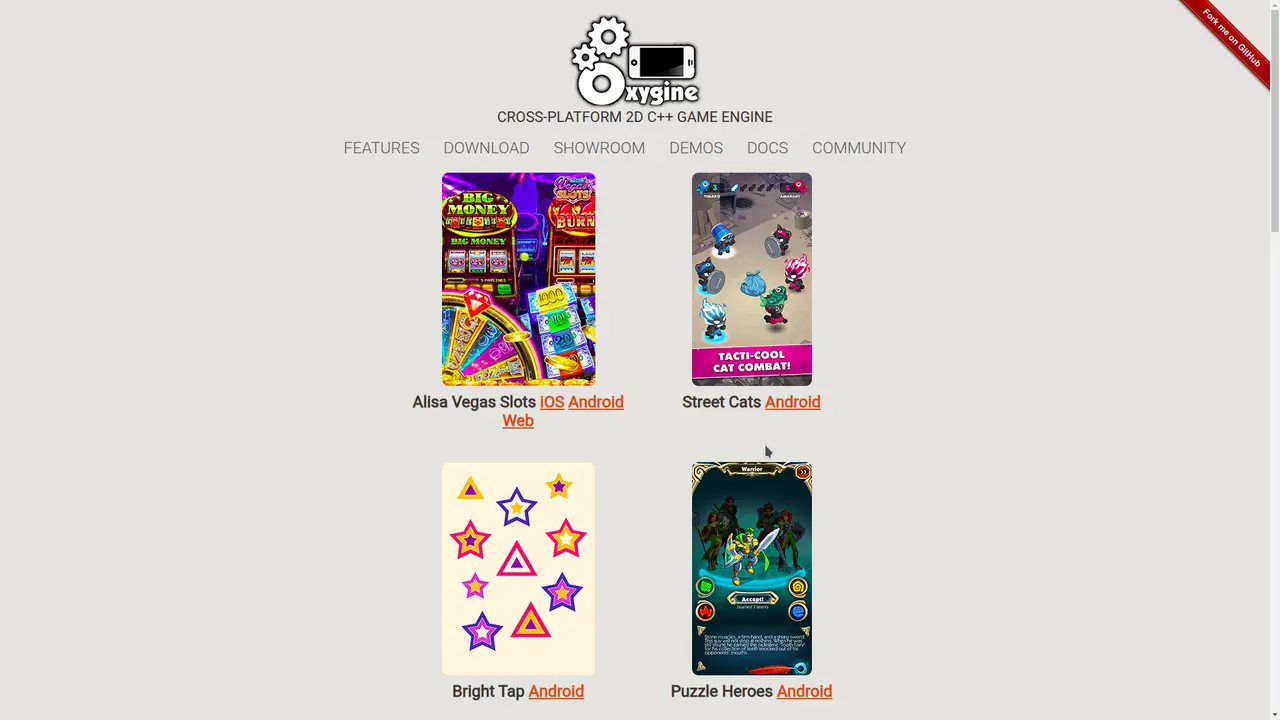
Oxygine is a 2D engine written in C++ aimed at for creating games for mobile and desktop devices. It is designed to be lightweight and fast, offering advanced features for graphics, animations, and 2D physics.
- Written in: C++
- Game development languages: C++
Famous games made with Oxygine:
- Pony Island
27. Raylib

Raylib is a library for developing 2D and 3D games written in C and aimed at simplifying the game creation process. It is highly modular and accessible to beginners, with a simple and straightforward syntax.
- Written in: C
- Game development languages: C++, with bindings for Python, Lua, Go, Ruby, JavaScript, and others.
Famous games made with Raylib:
- Python Arcade Games
- Overcooked! (prototype)
We have several videos that show how to develop games with Raylib, like the one below:
And another playlist with several others, access:
Raylib Playlist:
https://www.youtube.com/watch?v=bFLHWAv5Rcg&list=PLUJBQEDDLNcmhBzvdjQfKBspBzIUr2xiX
28. SDL

SDL (Simple DirectMedia Layer) is a multimedia library written in C that provides access to graphics, audio, input, and networking, and is ideal for 2D games. Its simplicity and portability make it a popular choice for developers who want to create lightweight, fast games.
- Written in: C
- Game development languages: C/C++, with bindings for C++, Python, Java, Ruby, Lua, and JavaScript.
Famous games made with SDL:
- SuperTux
- World of Goo
We have several videos that show how to develop games with SDL, like the one below:
And another playlist with several others, access:
SDL Playlist:
https://www.youtube.com/watch?v=fOkJP4eO32I&list=PLUJBQEDDLNcnqgTKkqgQX6_22W1fOCRrZ
29. Allegro

Allegro is a 2D game development library written in C. It offers features for graphics, audio, user input, and even text and font manipulation. It is widely used for prototyping and simple games.
- Written in: C
- Game development languages: C, with bindings for C++, Python, Ruby, Perl, and Lua.
Famous games made with Allegro:
- Allegro Kart
- Liquid War 6
We have a video that shows how to develop games with Allegro, see below:
30. Axmol

Axmol is an open-source 3D engine written in C++ with a focus on high-performance and extensible 3D graphics. It allows the creation of 3D games for desktop and mobile devices, with support for advanced physics, animations and shaders.
- Written in: C++
- Game development languages: C++
Famous games made with Axmol:
- There are not many notable commercial games yet.
31. Atomic Game Engine

Atomic Game Engine is an open-source engine that supports both C++ and JavaScript, offering a modern, cross-platform architecture. Its emphasis is on providing a flexible experience for developers, with an intuitive interface and powerful editing tools.
- Written in: C++
- Game development languages: C++, JavaScript.
Famous games made with Atomic Game Engine:
- Crashlands
32. PolyEngine

PolyEngine is an open-source, cross-platform 3D game engine written in C++. Focused on performance and flexibility, it is ideal for developers looking to create games with complex graphics and advanced physics.
- Written in: C++
- Game development languages: C++
Famous games made with PolyEngine:
- There are no notable commercial games yet.
33. GamePlay3D

GamePlay3D is an open-source framework written in C++, aimed at developing 3D games. It provides tools for rendering, physics, and animations, and can be used to create high-performance games.
- Written in: C++
- Game development languages: C++
Famous games made with GamePlay3D:
- There are no notable commercial games yet.
34. Delta Engine

Delta Engine is a cross-platform engine that supports both C++ and C# and JavaScript, allowing developers to create games for desktop and mobile devices.
- Written in: C++
- Game development languages: C++, C#, JavaScript.
Famous games made with Delta Engine:
- There are no notable commercial games yet.
35. Marmalade

Marmalade Quick is an extension of the Marmalade SDK that allows you to create mobile games in C++ with Lua scripting. The engine is aimed at developers looking to create high-performance games for mobile platforms.
- Written in: C++
- Game development languages: C++, Lua.
Famous games made with Marmalade Quick:
- Angry Birds (in early version)
36. Polyhedron

Polyhedron is an open-source, cross-platform engine written in C++ that focuses on creating both 2D and 3D games. Its modular architecture allows for great flexibility for developers.
- Written in: C++
- Game development languages: C++
Famous games made with Polyhedron:
- There are no notable commercial games yet.
37. Just a Neat Game Library

Just a Neat Game Library is an open-source engine written in C++, used to create both 2D and 3D games. It is designed to be modular and easy to use.
- Written in: C++
- Game development languages: C++
No notable commercial games yet.
38. Havok

Havok is a middleware suite developed by Intel, widely used for physics simulations, but also includes tools for game development. Its implementation is done in C++ and has been widely used in major AAA titles.
- Written in: C++
- Game development languages: C++
Famous games made with Havok:
- The Elder Scrolls V: Skyrim
- Half-Life 2
- Halo 3
39. UbiArt Framework

UbiArt Framework is a game engine developed by Ubisoft and used to create games with an impressive 2D artistic style. The engine has been used in famous Ubisoft titles such as Rayman Legends and Child of Light.
- Written in: C++
- Game development languages: C++
Famous games made with UbiArt Framework:
- Rayman Legends
- Child of Light
40. Maratis

Maratis is an open-source 3D engine, written in C++, with Lua support for scripting. Focused on creating lightweight and fast 3D games, the engine is suitable for indie developers.
- Written in: C++
- Game development languages: C++, Lua
Famous games made with Maratis:
- There are no notable commercial games yet.
41. Open 3D Engine (O3DE)

Open 3D Engine (O3DE) is a high-performance, open-source 3D engine built on Amazon Lumberyard and maintained by the Linux Foundation. It focuses on realistic graphics, scalability, and modularity for games, simulations, and interactive applications.
- Written in: C++
- Development languages: C++, Lua (via extensions), Python (for tools/editor)
Famous games made with O3DE: There are no major games publicly released with O3DE yet, as it is relatively new (released in 2021). Many projects are in development.
It is aimed at AAA projects, with modular architecture and integration with cloud systems and advanced rendering.
42. Bitsquid Engine

Bitsquid Engine is a 3D engine developed by the company Bitsquid, now used by Paradox Interactive. It is written in C++ and Lua, and is aimed at creating simulation and strategy games.
- Written in: C++
- Game development languages: C++, Lua
Famous games made with Bitsquid Engine:
- Cities: Skylines
- Magicka
43. PhyreEngine

PhyreEngine is an engine developed by Sony, written in C++ and aimed at developing games for PlayStation platforms.
- Written in: C++
- Game development languages: C++
Famous games made with PhyreEngine:
- Killzone: Shadow Fall
- Ratchet & Clank: QForce
44. Stingray

Stingray is a game engine developed by Autodesk that supports C++ and Lua. It is mainly used to create high-quality games and interactive visualizations.
- Written in: C++
- Game development languages: C++, Lua
Famous games made with Stingray:
- There are no notable commercial games yet.
45. Cafu Engine
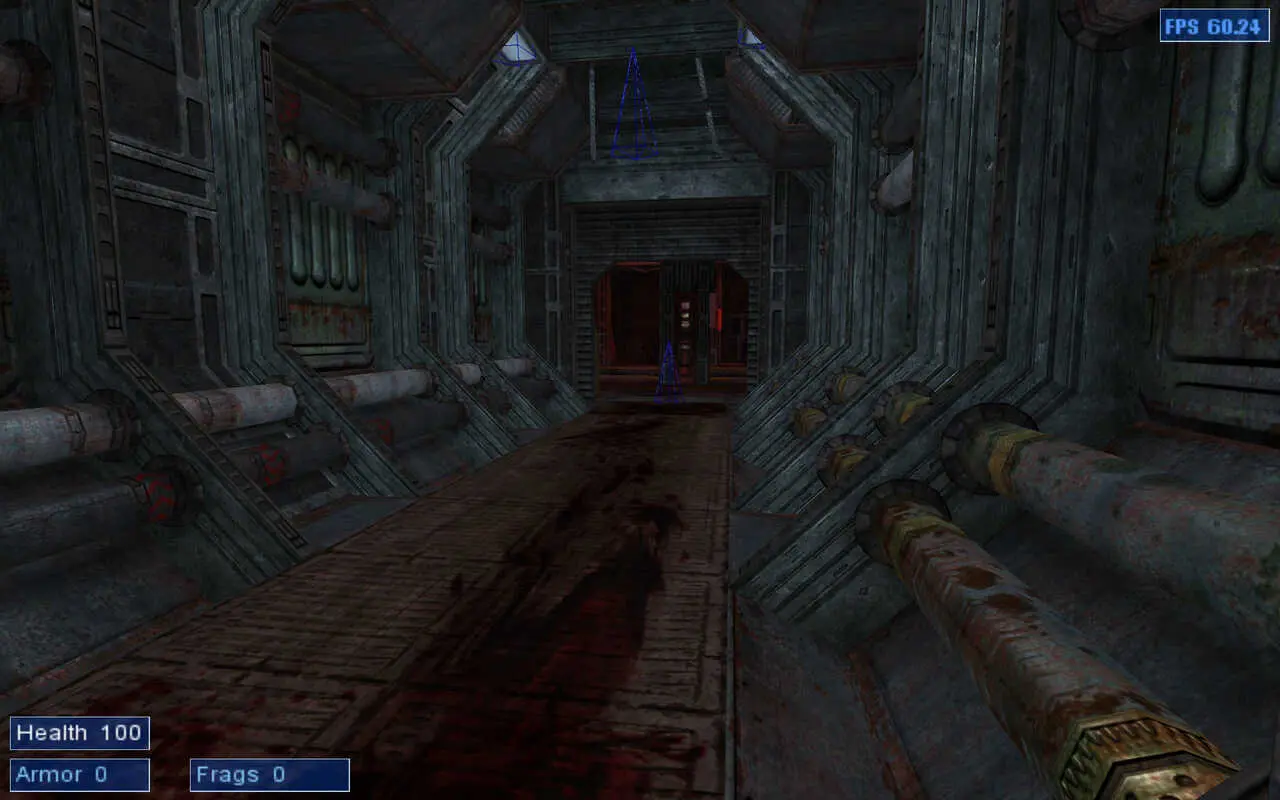
Cafu Engine is an open-source 3D game engine written in C++ with Lua support. Focused on 3D graphics and physics simulation, it provides a robust platform for creating complex 3D games.
- Written in: C++
- Game development languages: C++, Lua
Famous games made with Cafu Engine:
- No notable commercial games yet.
46. nCine

Delta Engine is a cross-platform game engine that supports C++, C#, and JavaScript. It is designed to enable mobile and desktop game development.
- Written in: C++
- Game development languages: C++, C#, JavaScript
Famous games made with Delta Engine:
- No notable commercial games yet.
47. Hyperion Engine

Hyperion Engine is a 3D and 2D game development engine focused on performance, modularity, and extensibility. The project aims to provide a solid foundation for creating custom engines, serving both as an engine and as a framework for learning and developing your own engines.
Hyperion Engine does not have a complete ecosystem like popular commercial engines, being more focused on developers who want to understand or create their own systems from an already functional base. It is an open-source engine with a technical focus.
Famous games made with Hyperion Engine:
- No known notable commercial games.
It is a more educational and experimental engine than used in commercial games.
Ideal for those who want to study modern engine architecture in C++.
48. IOLITE

IOLITE is an experimental and highly customizable game development engine, created with a focus on learning, prototyping and exploring modern rendering techniques and engine architecture. It has an advanced rendering system based on PBR (Physically-Based Rendering), support for ECS (Entity Component System), and built-in tools such as an editor and interactive console.
Famous games made with IOLITE:
- No known notable commercial games.
The engine is aimed at study, experimentation and personal development of graphic engines and techniques.
Although it is not used in commercial titles, IOLITE is a great reference for developers who want to understand the construction of a modern engine from scratch, with a focus on performance and modular design.
49. KlayGE

KlayGE is an open-source and multiplatform graphics engine, focused on advanced 3D rendering.
Famous games made with KlayGE:
- No records of notable commercial games.
50. Evergine
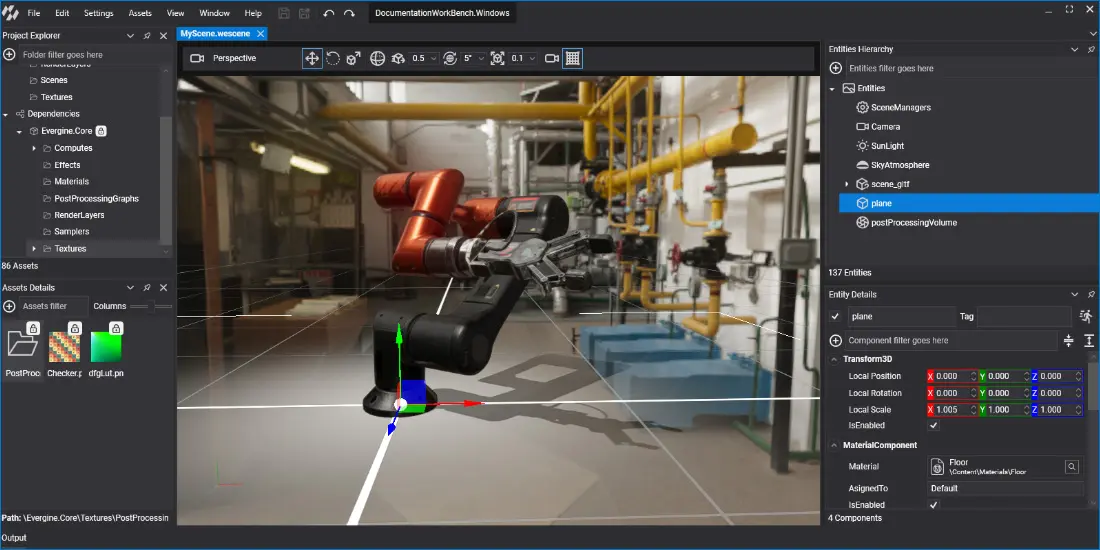
Evergine is a 3D engine aimed at industrial applications, augmented and virtual reality.
Famous games made with Evergine:
- Focused on industrial applications; no notable commercial games.
51. Spring Engine

Spring Engine is an open-source real-time strategy (RTS) engine, derived from Total Annihilation.
Famous games made with Spring Engine:
- Balanced Annihilation
- Zero-K
- Spring: 1944
- P.U.R.E.
52. Wicked Engine
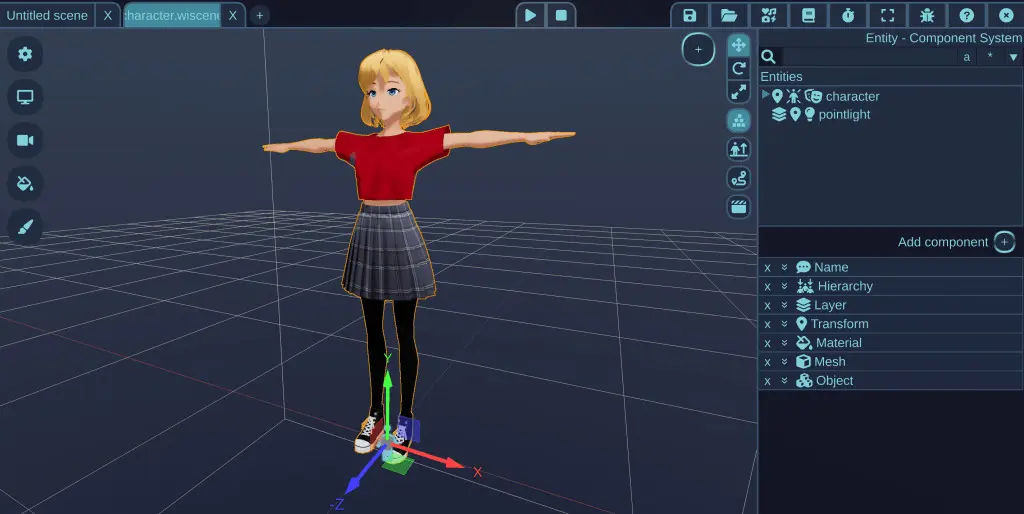
Wicked Engine is an open-source 3D engine with support for DirectX 12, Vulkan and ray tracing.
Famous games made with Wicked Engine:
- No records of notable commercial games.
53. AppGameKit
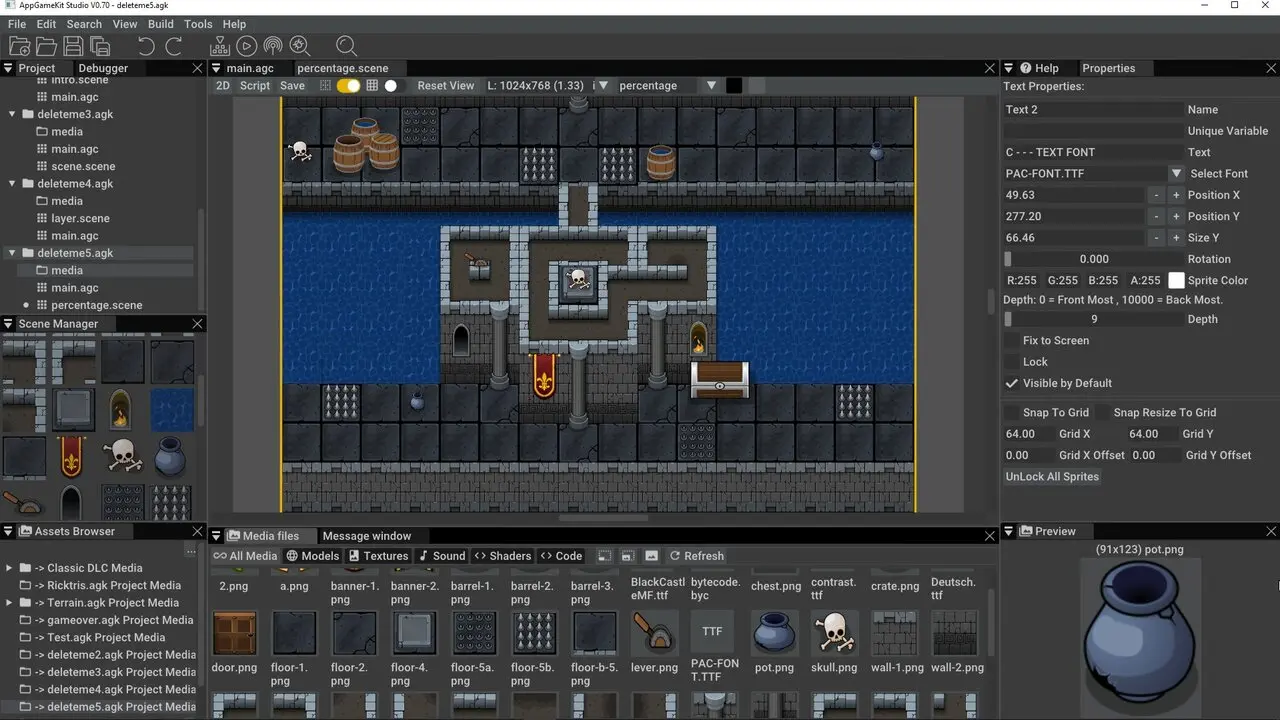
AppGameKit is a multiplatform engine aimed at independent developers, with syntax similar to BASIC.
Famous games made with AppGameKit:
- Warlordocracy
- Rogue Machine
- Logaterix
54. ENIGMA Development Environment

ENIGMA is an open-source alternative to GameMaker, compatible with its GML language.
Famous games made with ENIGMA:
- Independent projects; no notable commercial games.
55. VXR
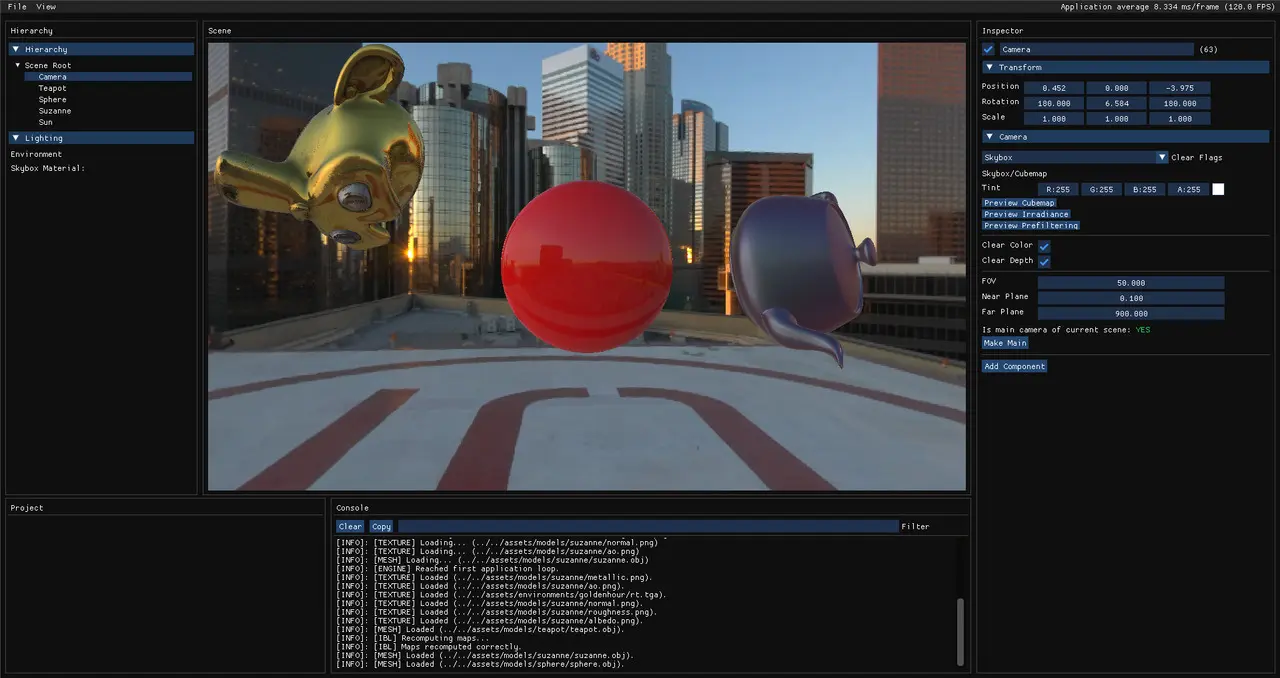
Atomic Game Engine is a cross-platform 2D/3D engine based on Urho3D, with support for C#, JavaScript and TypeScript.
Famous games made with Atomic Game Engine:
- No records of notable commercial games.
56. X-Ray Engine

X-Ray Engine is the proprietary engine developed by GSC Game World for the S.T.A.L.K.E.R. series
Famous games made with X-Ray Engine:
- S.T.A.L.K.E.R.: Shadow of Chernobyl
- S.T.A.L.K.E.R.: Clear Sky
- S.T.A.L.K.E.R.: Call of Pripyat
57. Halley Game Engine

Halley Game Engine is a modular and cross-platform 2D/3D engine, focused on productivity and flexibility.
Famous games made with Halley Game Engine:
- No records of notable commercial games.
58. Lumos

Lumos is an open source game engine focused on high performance, modern rendering, and cross-platform support. It is designed to be modular and extensible, offering a component-based architecture (CSE), physics engine, PBR rendering, Vulkan and OpenGL support, and real-time debugging tools.
Famous games made with Lumos: Currently, Lumos is still in active development and has no major commercial games released with it. It is most commonly used as a learning base, prototypes, and custom engines.
Aimed at developers who want to understand or build their own modern engine with advanced graphics support.
59. Crown Engine

Crown Engine is a full-featured, cross-platform game engine designed for flexibility, performance, and rapid iteration. It uses a data-driven approach, where all aspects of the game are defined by text-based configuration files, compiled into efficient, native BLOBs before deployment.
- Written in: C++
- Game development languages: C++
Famous games made with Crown Engine:
- There are no records of famous games developed with this engine.
60. Spartan Engine

Spartan Engine is an advanced game engine, developed by a single developer, focused on real-time research and experimentation. Intended for industry veterans, it is not recommended for beginners or for commercial game development.
- Written in: C++
- Game development languages: C++
Famous games made with Spartan Engine:
- There are no records of famous games developed with this engine.
61. Esoterica

Esoterica is an open-source game engine focused primarily on prototyping and learning modern engine architecture. Developed by Bobby Anguelov, it has a modular structure and focuses on clean and extensible design, ideal for developers interested in understanding the internal systems of an engine in depth.
Famous games made with Esoterica:
- No known commercial games. The engine is used more as a basis for studying and learning about engine development than for producing commercial games.
Esoterica serves as an excellent reference for developers who want to build their own engine or understand software engineering best practices applied to game development.
62. Leadwerks

Leadwerks is a 3D game engine that aims to facilitate the development of games and virtual reality experiences. It offers comprehensive tutorials and code examples to help developers create their own games.
- Written in: C++
- Game development languages: Lua, C++
Famous games made with Leadwerks:
- Hoodwink (used elements of the engine, mainly the renderer)
63. Turso3D

Turso3D is a lightweight and modular 3D game engine, designed to be easy to use and integrate. Focused on providing a solid foundation for game development and graphical applications.
- Written in: C++
- Game development languages: C++
Famous games made with Turso3D:
- There are no records of famous games developed with this engine.
64. jle

Jet-Lagged Engine (jle) is a simple yet powerful custom game engine written in C++ for PC games. It is being developed in parallel with an unannounced game.
- Written in: C++
- Game development languages: C++
Famous games made with jle:
- There are no records of famous games developed with this engine.
65. Minko framework

Minko is an open-source 3D game engine designed to create and display 3D content on multiple platforms, including HTML5, iOS, Windows, OS X, and Linux. It supports a scene/component API, über-shaders, and scripting.
- Written in: C++
- Game development languages: C++, JavaScript
Famous games made with Minko:
- There are no records of famous games developed with this engine.
66. Lina Engine

Lina Engine is a 3D game development engine written with a focus on modularity, performance, and extensibility, aimed primarily at developers seeking full control over the graphics pipeline and the ECS (Entity Component System) system. It features deferred rendering, PBR support, a built-in editor, a scene graph system, and integration with physics, animation, and UI.
Famous games made with Lina Engine:
- It does not yet have widely known commercial games; is an engine under active development, used primarily as an open source and educational project by developers looking to learn about engine building.
Aimed at enthusiasts and developers who want to understand or contribute to the creation of a robust engine in C++, with a technical and architectural focus.
67. Esenthel Titan Engine

Esenthel Titan Engine is a cross-platform game development engine, focused on high performance, ease of use, and native C++ support. Developed since 2000, it is maintained by Grzegorz Slazinski and offers advanced features for creating 3D games.
- Written in: C++
- Game development languages: C++ (with integrated editor that eliminates the need for .h files)
Famous games made with Esenthel Titan Engine:
- Lucius (2012)
- Crossroads Inn (2019)
- Dragon Fury (2022)
- Into The Dark (2022)
- CSCD: Vietnam Mobile Police (2024)
- Dungeon Hero RPG (2015)
- Everlasting Crusade (2013–2016)
- ’90s Football Stars (2018–2023)
- Hell Invades Heaven (2021)
- Moobly (in development)
68. ETEngine
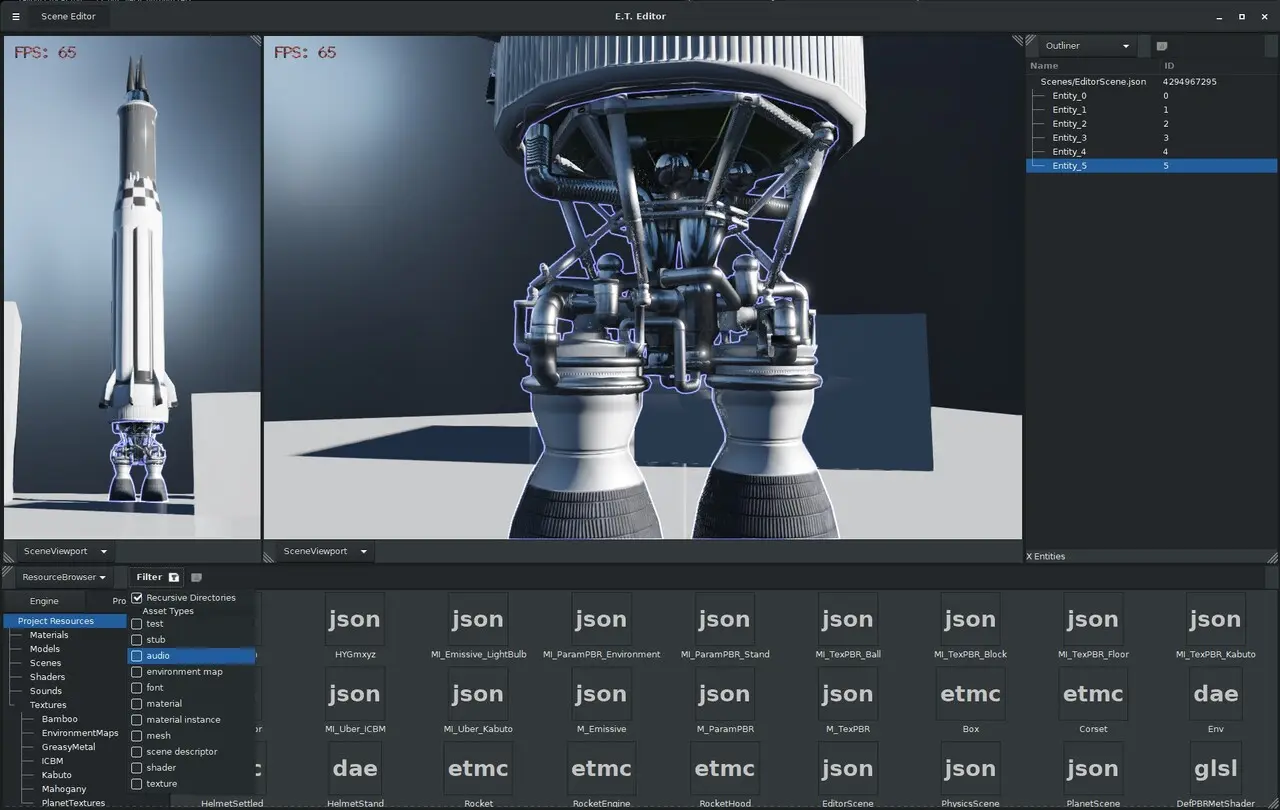
ETEngine is a modular and open-source game engine, developed with a focus on ECS (Entity Component System)-based architecture, aiming for flexibility, parallelism and performance. It has a robust threading system, explicit memory management and strong separation between logic and data, making it a solid foundation for custom engines and experiments with modern engine architectures.
Famous games made with ETEngine:
- The engine is experimental and academic; it has no known famous commercial games.
Mainly aimed at learning and studying modern ECS architectures, being ideal for developers interested in understanding and building engines from scratch.
69. C4Engine

C4Engine is a commercial engine for 3D game development, supporting platforms such as Windows, PlayStation and Xbox. It offers a complete set of tools for game creation, including scene editor, physics system and advanced rendering.
Famous games made with C4Engine:
- Specific information about commercial games is not widely available.
70. Lumix Engine
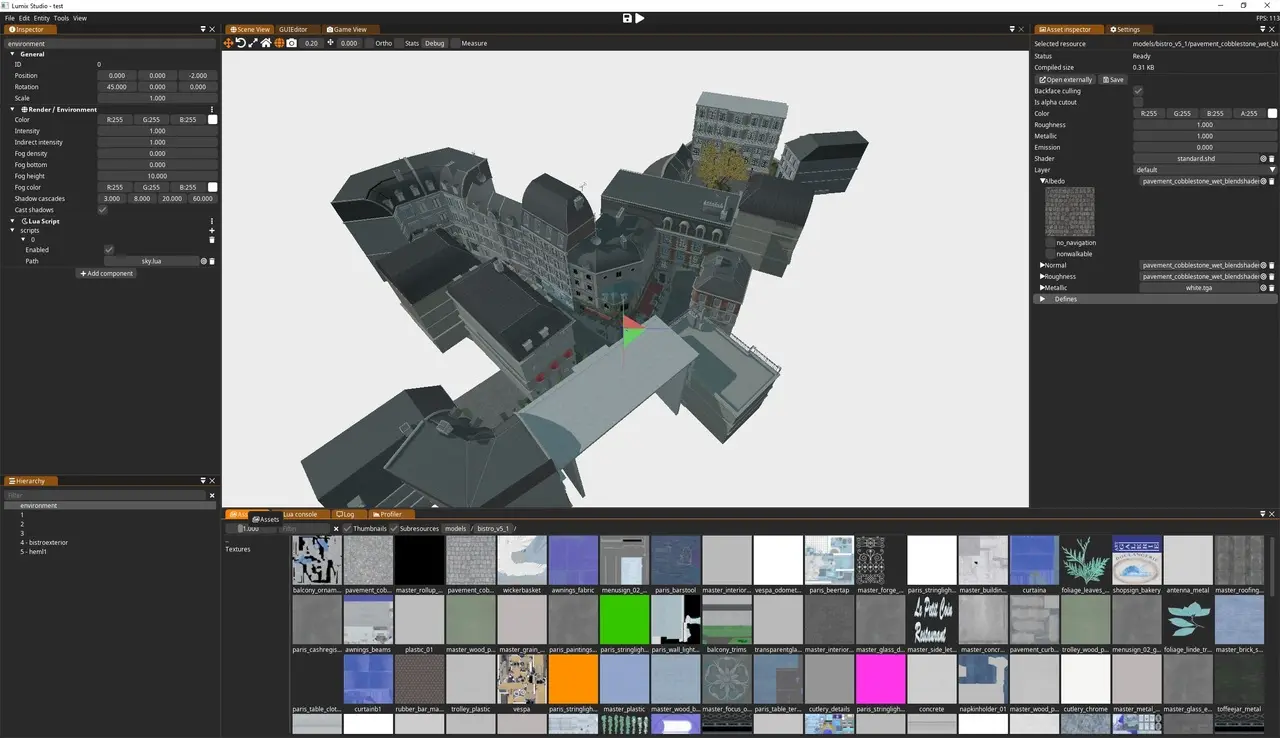
Lumix Engine is an open-source 3D engine written in C++ that offers an integrated visual editor and support for modern rendering systems. It is suitable for developers looking for a solid and extensible foundation for 3D projects.
Famous games made with Lumix Engine:
- There are no records of widely recognized commercial games.
71. Limon Engine
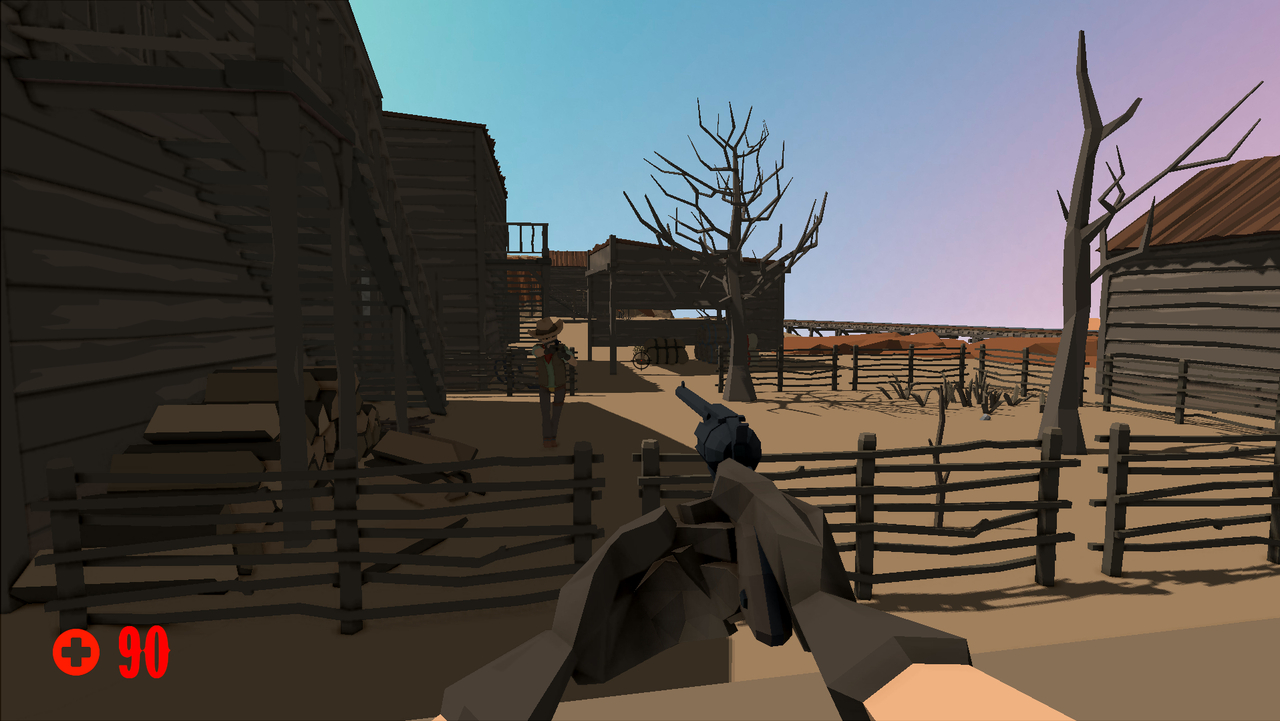
Limon Engine is a multiplatform 3D engine focused on first-person shooter games. It stands out for its ease of use and study, being a lightweight and free option for independent developers.
Famous games made with Limon Engine:
- No records of known commercial games.
72. Hazel Engine
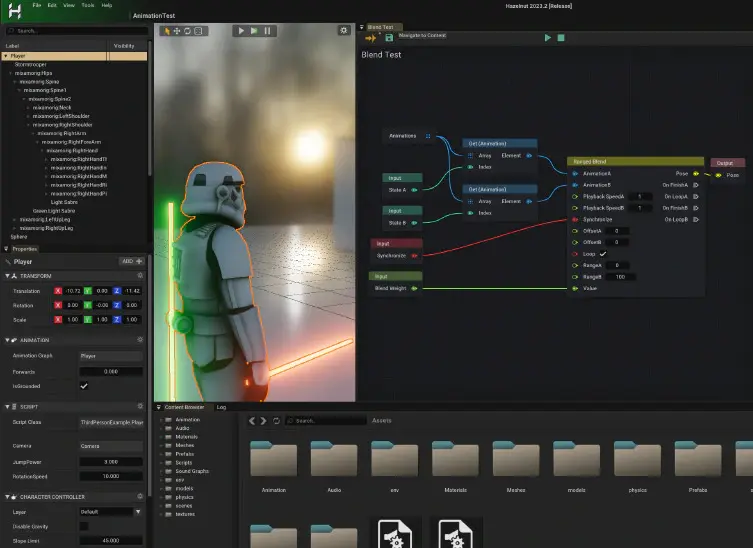
Hazel Engine is an early-stage game engine created by The Cherno(Yan Chernikov). It serves as an educational base for developers interested in learning about engine creation, with a focus on rendering and system architecture.
Famous games made with Hazel Engine:
- No records of known commercial games.
73. ezEngine

ezEngine is an open source game engine written in C++, offering a modular architecture and support for modern rendering features. It is suitable for developers looking for a flexible foundation for custom projects.
Famous games made with ezEngine:
- There are no records of widely recognized commercial games.
74. RavEngine

RavEngine is a modern 3D engine, written in C++23, with a focus on performance and ease of use. It supports multiple platforms and offers advanced features for developing games and interactive applications.
Famous games made with RavEngine:
- No records of known commercial games.
75. Thunder Engine

Thunder Engine is a modular, cross-platform, open-source game engine designed for 2D and 3D game development with support for scripting, custom GUI, animations, physics, and an entity-based scene system (ECS).
- Written in: C++
- Game development languages: C++ and AngelScript
Main features:
- Entity/component system
- OpenGL-based rendering
- Integrated editor with custom GUI
- Animation and physics system
- Support for GLSL shaders
- Scene serialization
-
Logic scripting with AngelScript
- No records of famous commercial games, as it is a relatively new engine focused on independent projects and learning.
Aimed at developers who prefer full control of the code and customization, with a clean and extensible structure. Ideal for those who want to study or create their own pipeline based on a C++ engine.
76. Adria

Adria is an experimental and minimalist game engine, focused on learning and exploring engine design concepts in C++. Its code is simple, straightforward and aims to facilitate the understanding of the architecture of a 2D engine.
No commercial or famous games. Adria is an engine for study and experimentation, not aimed at producing commercial games.
Recommended for those who want to understand how an engine works inside, with an educational focus and lean structure.
77. Irrlicht Engine

Irrlicht Engine is an open-source, lightweight, cross-platform 3D engine created by Nikolaus Gebhardt in 2003. It supports rendering via OpenGL, DirectX, and its own renderer, as well as offering a scene system, skeletal animation, particles, built-in GUI, and shader support. It is known for its ease of use and broad compatibility with both old and new hardware.
- Written in: C++
- Languages for game development: C++; unofficial bindings for Java, Python, Lua, C#, among others.
Famous games made with Irrlicht Engine:
- Octodad: Dadliest Catch
- SuperTuxKart (versions up to 0.8.1)
- Craft The World
- H-Craft Championship
- Schwarzerblitz
- Star Ruler
- Democracy 3
- Bugsnax (modified version)
78. Crystal Space

Crystal Space is a modular and cross-platform 3D engine started in 1997 by Jorrit Tyberghein. Supports OpenGL, skeletal animation (CAL3D), physics via ODE/Bullet, shaders, software rendering, and scripting with Python and Lua. Although discontinued, it was a solid foundation for open source projects.
- Written in: C++
- Game development languages: C++, with support for Python and Lua via plugins.
Famous games made with Crystal Space:
- PlaneShift (MMORPG)
- Yo Frankie! (in conjunction with Blender)
- Crystal Core (technical demo)
- Tunnel Fighter
- Bonez Adventure
79. Delta3D

Delta3D is an open source 3D engine initially developed by the US Naval Postgraduate School. Focused on simulations and training, it integrates OpenSceneGraph, Cal3D, OpenAL and PhysX, offering support for AI, physics and advanced rendering.
- Written in: C++
- Game development languages: C++
Notable projects using Delta3D:
- Military and training simulations for the US Department of Defense.
80. Rootex

Rootex is an open-source game engine developed by SDSLabs with a focus on modularity, component-based architecture (ECS) and integrated tools to facilitate the development of 2D and 3D games. It offers a built-in editor, scripting support, resource management, scene system and basic physics. Ideal for learning and small to medium-sized projects.
There are no records of famous commercial games made with Rootex. The engine is mainly used for educational purposes and experimentation.
Engine aimed at learning modern game engine concepts, with a focus on code clarity and extensibility.
81. Bamboo

Bamboo is an open source game engine focused on performance and modularity. Inspired by modern engines like Unity and Unreal, it was created with the goal of offering a solid foundation for 2D and 3D games, with an entity-component system (ECS), visual editor, physics support, rendering, and scripting.
It does not yet have any major commercial games, as it is an engine under development and more focused on independent studies and projects.
Although it is not widely used in the industry, Bamboo is an excellent example of a modern engine written in C++ with C# as the scripting language, suitable for developers looking to understand the architecture of an engine from scratch.
82. Urho3D

Urho3D is a lightweight, cross-platform 2D/3D engine inspired by OGRE and Horde3D. It supports rendering via Direct3D9/11, OpenGL, OpenGL ES and WebGL, and offers scene, physics, animation, networking and scripting in Lua and AngelScript.
- Written in: C++
- Game development languages: C++, Lua, AngelScript
Famous games made with Urho3D:
- Clinically Dead
- Edge of Time: Rise of the Aeus
- Bolderline
- War Priest
83. GDevelop

GDevelop is an open-source, cross-platform 2D engine aimed at beginners and developers with no programming experience. It uses a visual event system for game logic and exports to HTML5, Android, Windows, Linux, and macOS.
- Written in: C++ and JavaScript
- Languages for game development: Visual event system; extensible with JavaScript
Famous games made with GDevelop:
- Hyperspace Dogfights
- Lil BUB’s HELLO EARTH
- Mindustry
- The Fungus
84. AnKi 3D Engine

AnKi 3D Engine is a high-performance graphics and simulation engine focused on real-time games and simulations. It is aimed at experienced programmers looking for control over modern rendering.
Famous games made with AnKi 3D Engine:
- No notable commercial games. It is mostly used for personal projects and advanced graphics tests.
85. Bgfx

Bgfx is a multiplatform graphics library for rendering 2D and 3D graphics, not being a complete game engine, but used as a base for graphics engines and applications.
Famous games/engines that use Bgfx:
- The Machinery
- Dear ImGui (demos)
- Dolphin Emulator (graphical backend tests)
86. Nebula Engine
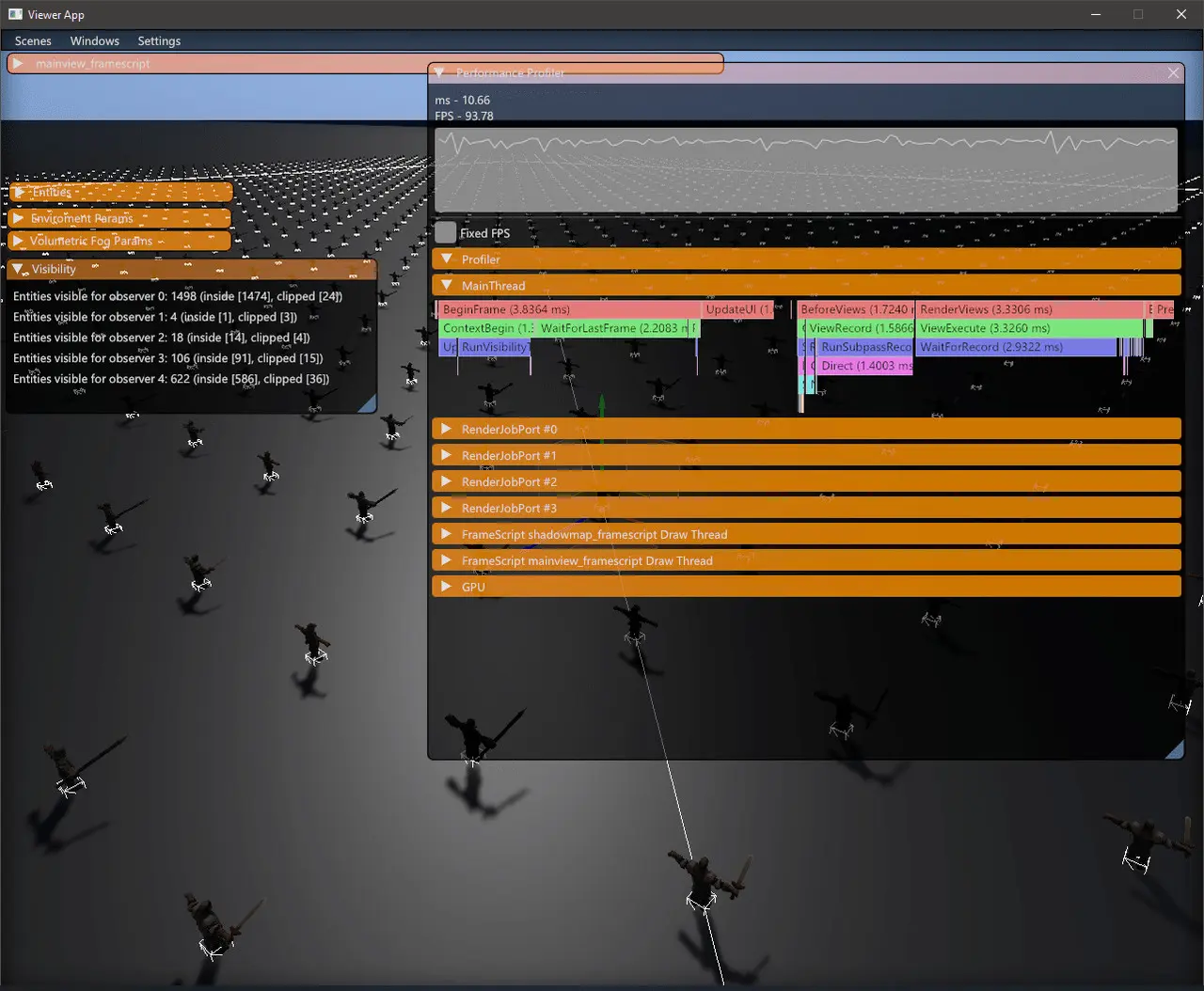
Nebula Engine (also known as Nebula3 or Nebula Device) is a modular engine used primarily by European studios such as Radon Labs, focusing on PC and console games.
Famous games made with Nebula Engine:
- Drakensang: The Dark Eye
- Venetica
87. U3D
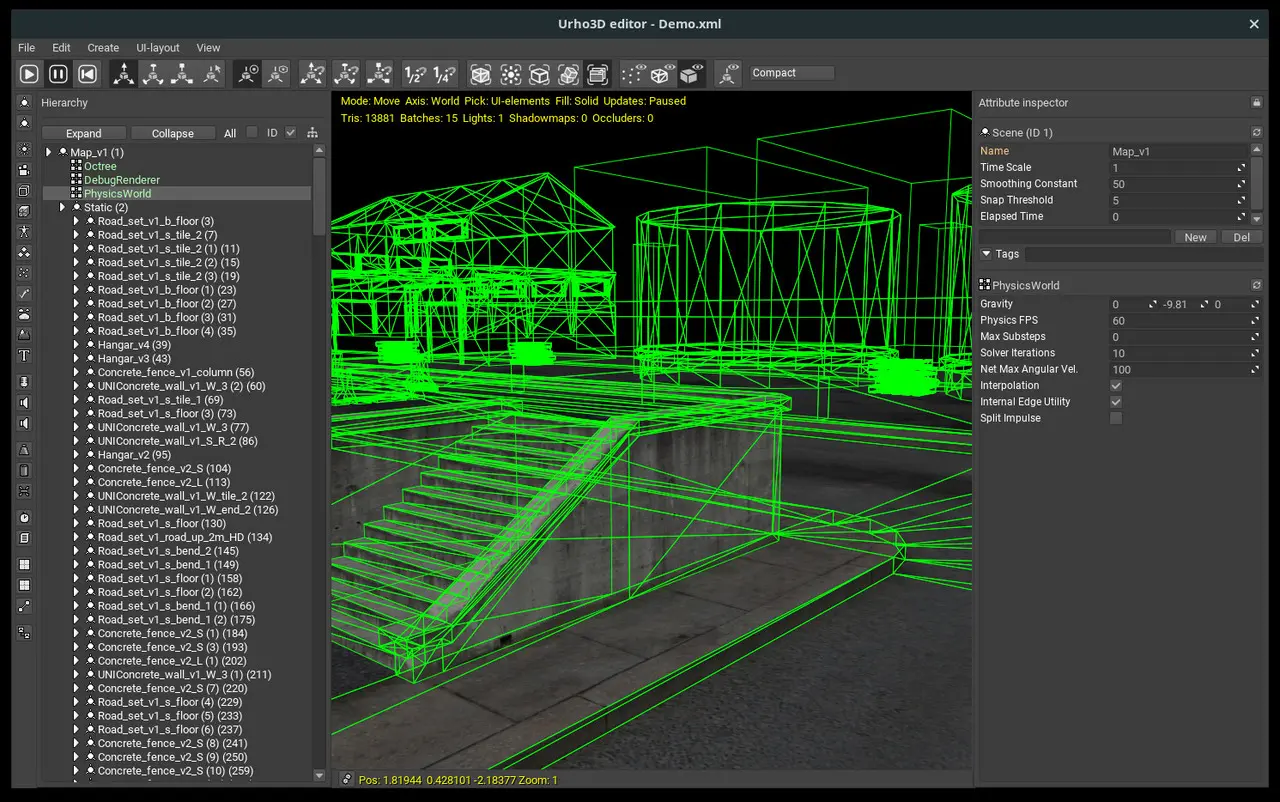
U3D (Universal 3D) is an open source graphics engine aimed at interactive 3D applications, originally developed as part of an Intel standard to facilitate the interoperability of 3D graphics across different platforms. Currently, the project is maintained by the community and focuses on 3D rendering and visualization, being used more in technical and scientific applications than in commercial games.
No commercially famous games. U3D is mostly used in:
Despite the name suggesting a focus on games, U3D is an engine more focused on interoperability and technical 3D visualization than on the development of commercial games.
88. Metaverse Engine (Roblox engine, C++ core)

Metaverse Engine is the core of the Roblox platform, a proprietary engine optimized for creating multiplayer, social, and immersive experiences.
Famous games made with Metaverse Engine:
- Brookhaven 🏡RP
- Adopt Me!
- Blox Fruits
- Tower of Hell
- Jailbreak
89. Quake Engine (id Tech 2)

Quake Engine, also known as id Tech 2, was a revolution in engine design in 1996, bringing true 3D rendering with BSP, dynamic lighting and mod support.
Famous games made with Quake Engine:
- Quake
- Hexen II
- Half-Life (modified and extended by Valve)
- Kingpin: Life of Crime
90. Serious Engine

Serious Engine was created by Croteam to support large open environments with many simultaneous enemies, being extremely efficient for arcade shooters.
Famous games made with Serious Engine:
- Serious Sam: The First Encounter
- Serious Sam: The Second Encounter
- Serious Sam 3: BFE
91. VQEngine

VQEngine is an open-source game engine designed for learning and experimentation, with a focus on clean structure and modularity. Developed by vilbeyli, the engine implements modern rendering concepts, ECS (Entity Component System) and resource management.
Technical features:
- OpenGL-based rendering
- ECS (Entity-Component-System) support
- Asynchronous resource system
- Architecture based on reusable components
- Clean and didactic design for educational purposes
No relevant commercial games — engine focused on learning and experimentation, not used in popular commercial titles.
Ideal for developers interested in understanding how modern engines work under the hood.
92. DarkPlaces Engine

DarkPlaces Engine is a heavily modified Quake-based engine with support for modern graphics, particles, dynamic shadows, and physics and networking improvements.
Famous games made with DarkPlaces Engine:
- Nexuiz (original)
- Xonotic (spiritual successor to Nexuiz)
- Transfusion (Blood Remake)
93. Godot C++ J.E.N.O.V.A

Godot C++ J.E.N.O.V.A is an extension for the Godot 4 engine that allows the use of C++20 as a scripting language, integrating directly into the Godot editor.
Famous games made with Godot C++ J.E.N.O.V.A:
- Project in development; no notable games released so far.
94. Voxel Farm Engine
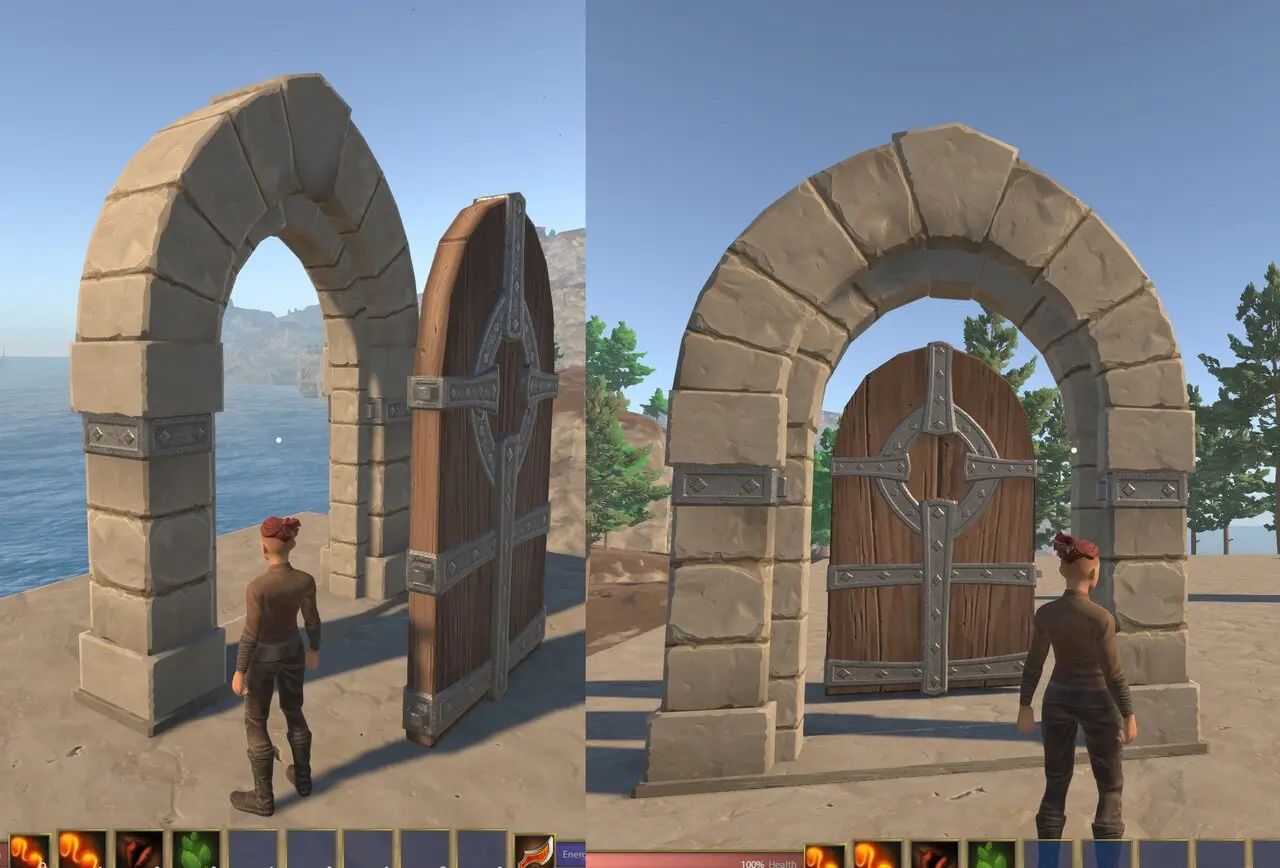
Voxel Farm Engine is an engine specialized in procedural generation of voxel terrains and environments, allowing the creation of destructible and expansive worlds.
- Written in: C++
- Game development languages: C++, integration with Unreal Engine and Unity
Famous games made with Voxel Farm Engine:
- EverQuest Next (cancelled)
- Landmark (cancelled)
95. Genesis3D

Genesis3D is an open source 3D engine released in the late 90s, focused on facilitating game development by small teams.
Famous games made with Genesis3D:
- Shadow of the Devil
- The War of Genesis III
96. Void Engine (Arkane Studios)

Void Engine is an engine developed by Arkane Studios, based on id Tech 6, with approximately 70% of the code rewritten to meet the specific needs of the company’s games.
Famous games made with Void Engine:
- Dishonored 2
- Prey (2017)
97. Hero Engine

Hero Engine is an engine focused on the development of MMORPGs, offering real-time collaboration tools and integration with several third-party technologies.
- Written in: C++, C#
- Game development languages: HeroScript Language (HSL), C#
Famous games made with Hero Engine:
- Star Wars: The Old Republic
- The Repopulation
98. Diesel Engine (from the Payday franchise)

Diesel Engine is an engine originally developed by Grin for racing games, later adapted by Overkill Software for the Payday franchise.
Famous games made with Diesel Engine:
- Payday: The Heist
- Payday 2
99. VRSFML

VRSFML is a modern fork of SFML (Simple and Fast Multimedia Library) VERSION 3 created by Vittorio Romeo, with a focus on high performance, simplicity and compatibility with modern C++. It incorporates significant improvements such as batch rendering, integration with Dear ImGui, Emscripten support (compilation to WebAssembly) and extensive use of modern C++ features (such as templates, ranges and coroutines).
Differentials:
- Allows you to render hundreds of thousands of entities at 60 FPS with batch rendering.
- ECS (Entity-Component-System) oriented architecture.
- Focus on 2D games with GPU accelerated rendering.
- Compatible with WebAssembly via Emscripten.
- Native GUI integration via Dear ImGui.
There are no major commercial games made with VRSFML yet, since it is an experimental engine/fork and is mostly used in academic and personal projects or as a base for custom engines.
Ideal for: Developers who want to explore modern C++ with high performance in 2D games, study advanced game engine architecture techniques and work with visualization or graphic tools.
100. REDengine (CD Projekt RED)

REDengine is a proprietary engine developed by CD Projekt RED, used in its main titles until the transition to Unreal Engine 5.
Famous games made with REDengine:
- The Witcher 2: Assassins of Kings
- The Witcher 3: Wild Hunt
- Cyberpunk 2077
There are actually more than double that, but I needed to separate the best ones and other random ones so the list wouldn’t be too long!
If you want to learn C++ and Game Development, I suggest you purchase our course package:
https://terminalroot.com.br/promo
And also read Game Development books:
20 Books on Game Development that are worth reading
See also:
Discover 5 Libraries for Creating 2D Games in C++ 🎮 🕹️
Sources:
- https://en.wikipedia.org/wiki/List_of_game_engines
- https://github.com/redorav/public_source_engines
- https://alternativeto.net/software/defold-engine/
- https://alternativeto.net/lists/12879/list-of-c--game-engines-and-frameworks/
- https://www.inapps.net/top-gaming-engines-for-c-to-use/
- https://github.com/bobeff/open-source-engines
- https://gamefromscratch.com/c-c-game-engines-in-2025/
- https://www.youtube.com/@gamefromscratch/search?query=C%2B%2B


